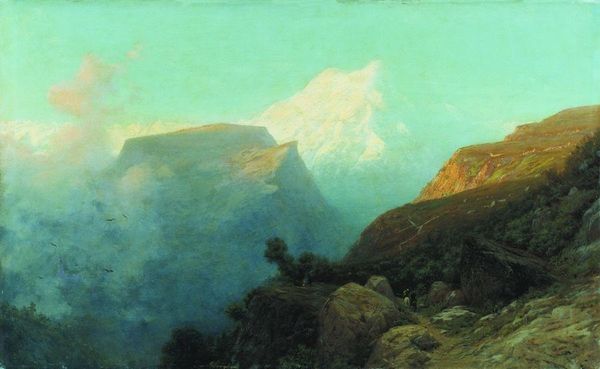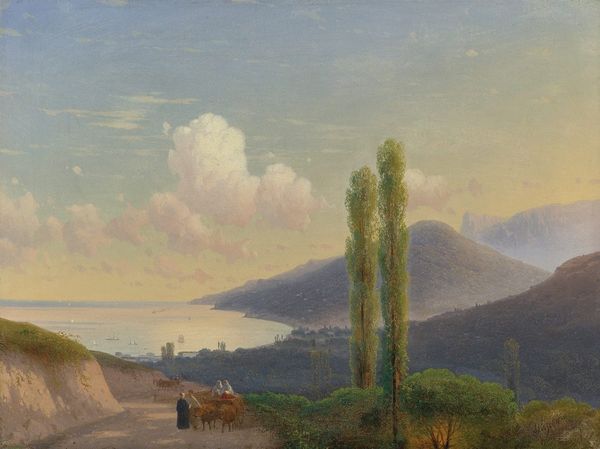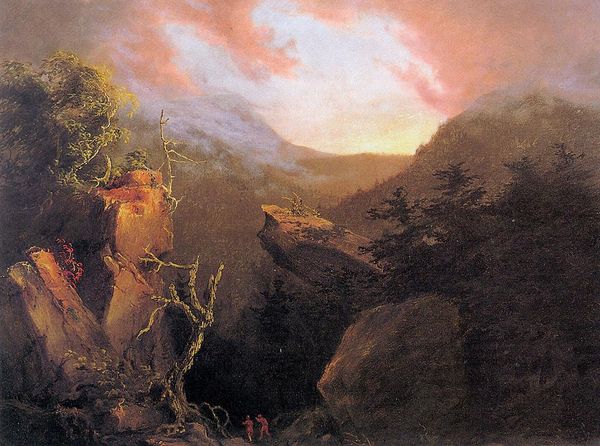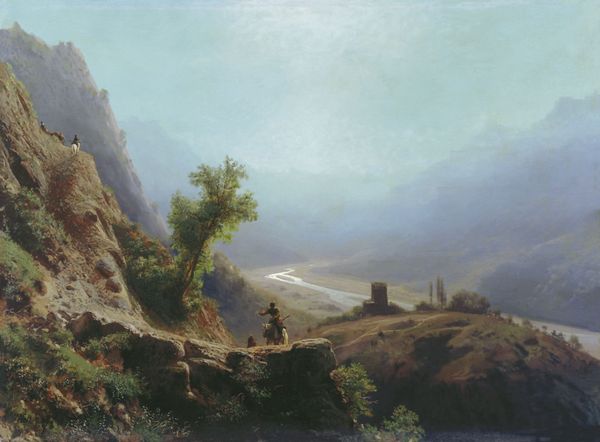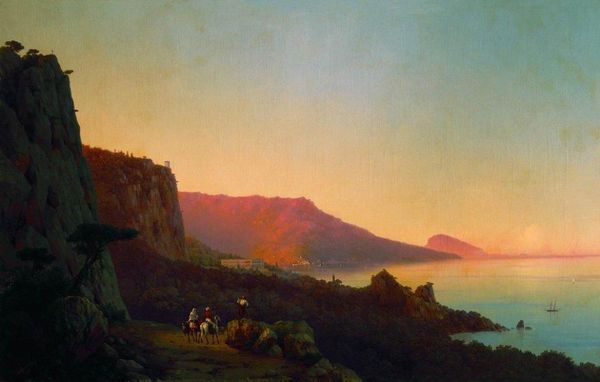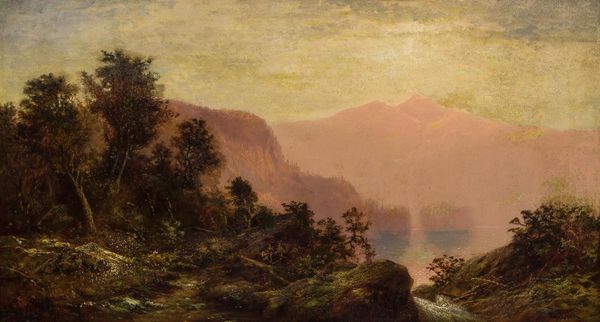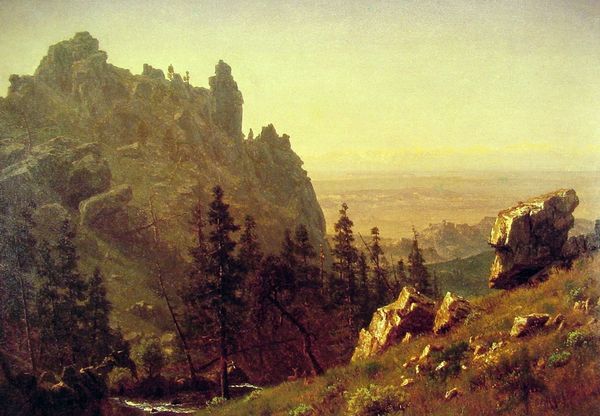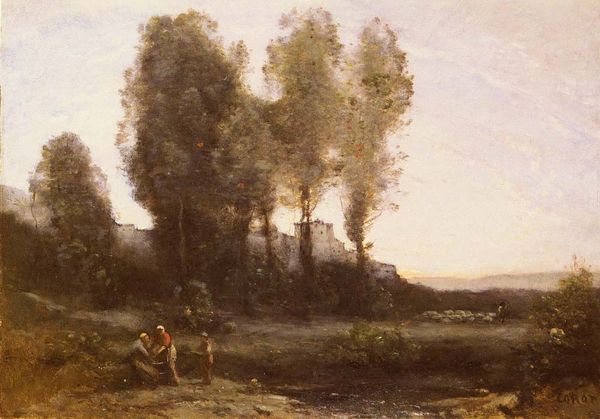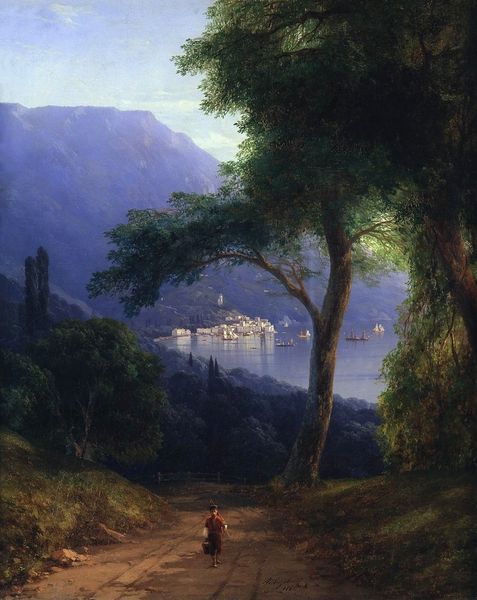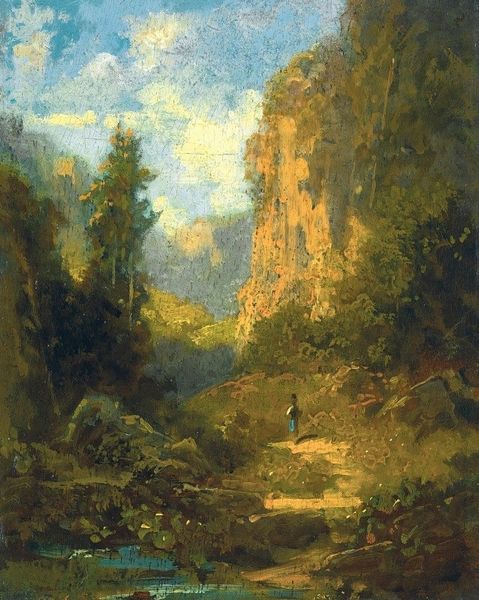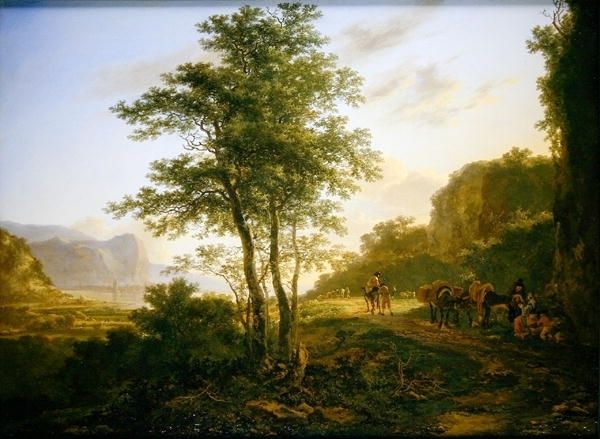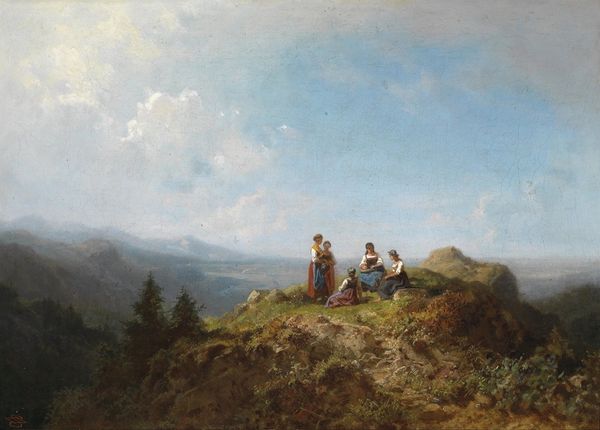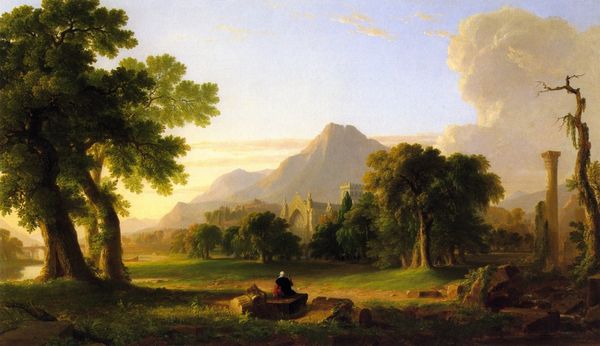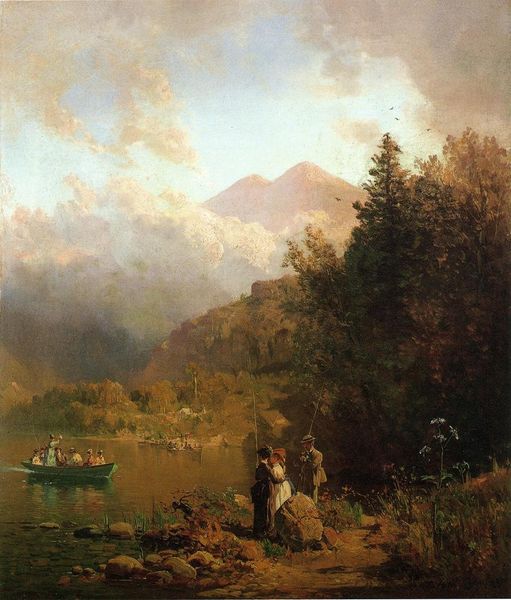
Copyright: Public domain
Editor: Here we have Aivazovsky's "On the Way to Yalta", painted in 1860 using oil paints. There's a stillness and quietness to this piece, even with the figures and carriage present. It's almost dreamlike with those soft blues and greens. What catches your eye when you look at this painting? Curator: The romanticism, definitely. But consider the time. 1860. This isn't just a picturesque landscape; it’s a carefully constructed image reflecting the political and social landscape of Russia under Alexander II. Think about Crimea's recent history then. Editor: The Crimean War had just ended, right? Curator: Exactly. Yalta, being in Crimea, held symbolic weight. Aivazovsky, as an Armenian artist deeply connected to the Russian Imperial court, was acutely aware of this. He presents Yalta as serene, accessible, even desirable. Consider how the road draws your eye. Who is this journey for, and what does it represent? Editor: So, it's not just a landscape, it's almost a piece of propaganda? Making Crimea seem like a welcoming part of the Russian empire again? Curator: It’s more nuanced than outright propaganda, but certainly, it participates in shaping a narrative. The light, the figures calmly observing the scene – it all contributes to an image of peace and restored order. Even the impressionistic touch suggests that this Crimean city is modern and integrated into Russian society. The museum also plays an important role of displaying Crimea. Editor: That's a fascinating perspective. I hadn’t considered the socio-political context so deeply. Thanks, I now understand how much museums like this play a role in art. Curator: And that's the point of historical inquiry; to consider whose stories get told and how. We can question established historical views to explore many more opinions.
Comments
No comments
Be the first to comment and join the conversation on the ultimate creative platform.
